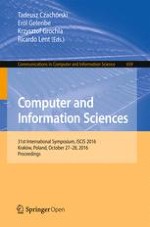
Open Access 2016 | OriginalPaper | Buchkapitel
XBorne 2016: A Brief Introduction
verfasst von : Jean Michel Fourneau, Youssef Ait El Mahjoub, Franck Quessette, Dimitris Vekris
Erschienen in: Computer and Information Sciences
Aktivieren Sie unsere intelligente Suche, um passende Fachinhalte oder Patente zu finden.
Wählen Sie Textabschnitte aus um mit Künstlicher Intelligenz passenden Patente zu finden. powered by
Markieren Sie Textabschnitte, um KI-gestützt weitere passende Inhalte zu finden. powered by